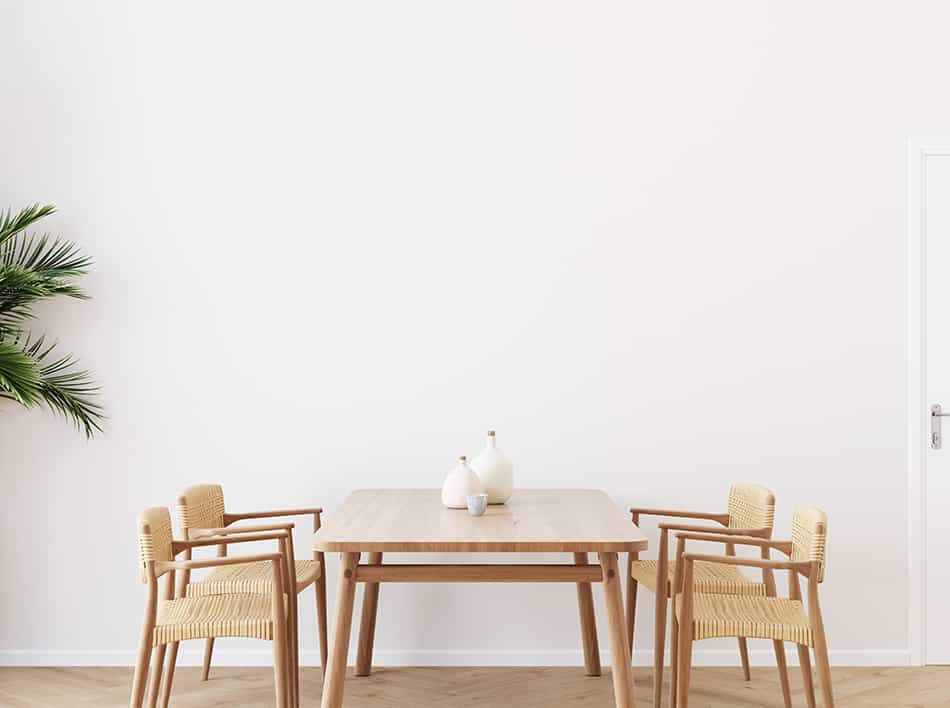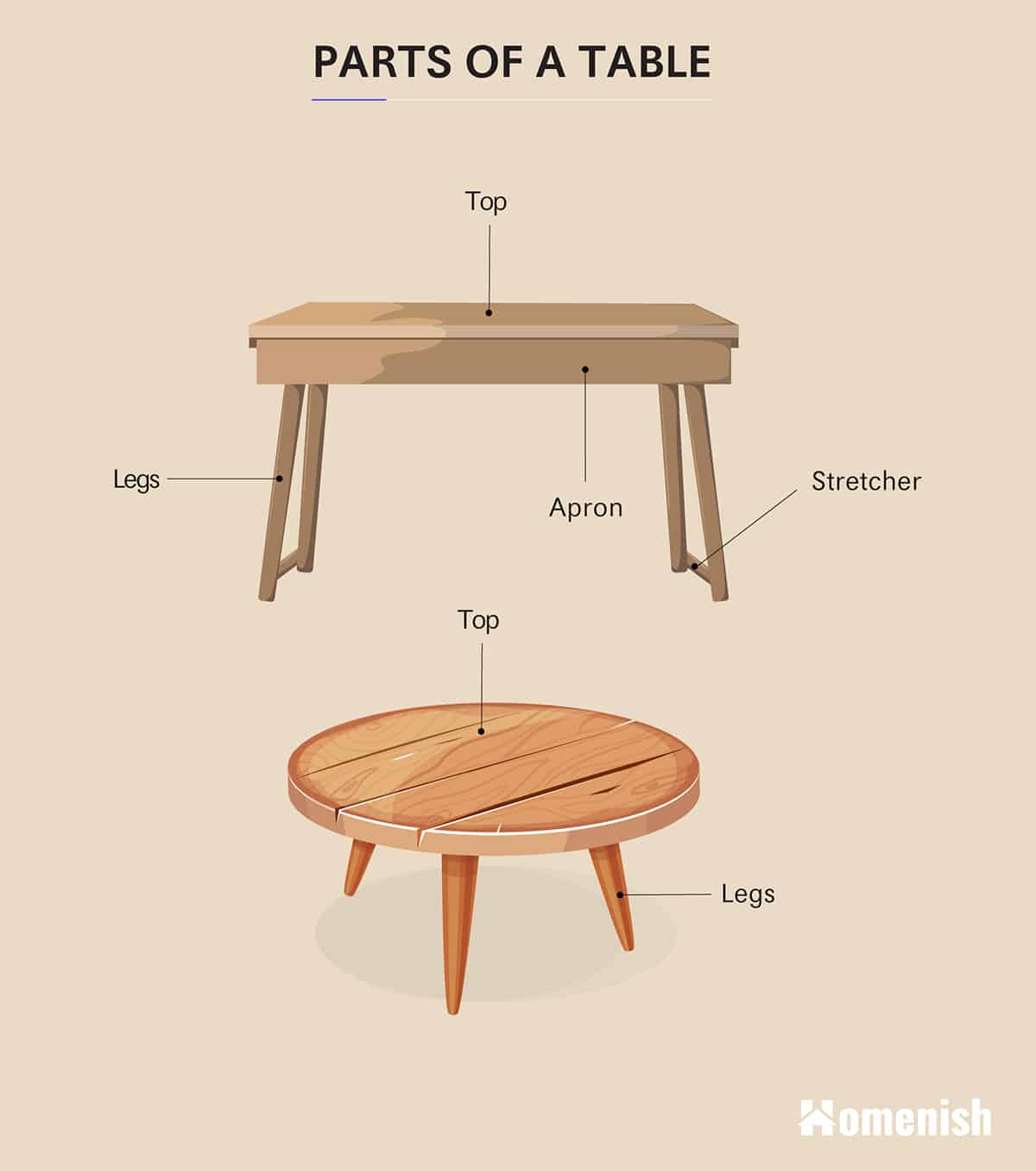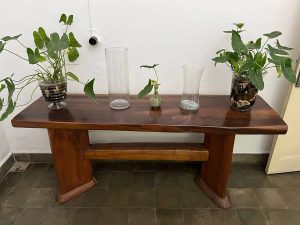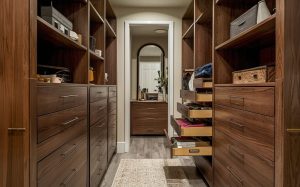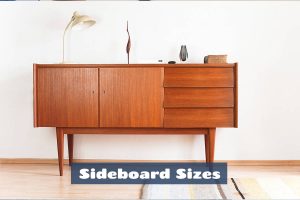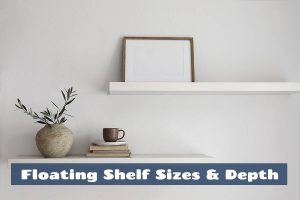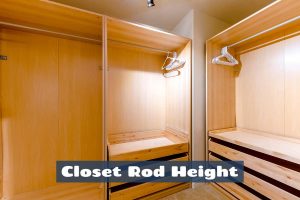Tables are one of the most popular types of furniture pieces. Unlike some other furniture that has been replaced by other stylish and functional types of furniture, tables have proven to be irreplaceable.
This is because they are very functional and versatile. This is also why they are used in all types of settings and establishments. Whether for formal settings in offices and factories or informal settings in your homes, a table is one of those essential pieces that you must surely have.
Tables come in different types, sizes, and shapes and also have different parts- namely, dining tables, pool tables, coffee tables, etc. The shape of a table determines if it will fit in your room or not. Square-shaped tables are suitable for compact spaces and families with a few members; round and oval tables are very functional as they can fit in small and tight spaces and are best suited for social functions as they can foster a sense of familiarity, while rectangular tables are most suitable for narrow spaces and large families.
Make sure you consider the shape of your room before selecting the table to buy to prevent a situation where you find it hard to move in and around the table. And this is also why it is important to know the parts of a table.
It is important to know the different parts of a table as it will help you know the functions of each part and also assist you in selecting the right table for your room and office.
Functions of a Table
The functionality of a table is one of the major reasons why it has remained popular over the years. Tables perform multiple functions in any space and setting that they are utilized. Here are the functions of a table:
Esthetic
Tables can function as a tool to express your individual style. They are very versatile and come in different colors and styles. Your choice of a table should reflect your style and match the decor of the space that it is used in. Tables function as a decorative tool, but in a purposeful manner. It can be used to fill a space, elevate an appliance in the house, or as a simple decorative piece by itself.
Storage
Another major function of a table is that it can be used as storage equipment. A table with shelves or drawers underneath it can be used to store files, tools, magazines, keys, napkins, etc. On the other hand, if your table does not have a drawer or any other in-built storage, the flat top can also be used to keep various types of things.
For Convergence
Your table also works as the place where your family comes together for meals, discussions, games and also for hosting families and friends on specific occasions. A table fosters unity and a degree of natural warmth by bringing everyone together. Tables can be used to create a focal point in the room and beautify a space.
Parts of a Table
Check out the diagram about every part of a table here.
1) Top
This is the most important and practical part of a table. The top is the flat surface of the table on which you place things, work, play games, dine with family or on occasions with friends, used for assignment by the children, etc. The top part of the table comes in different shapes, either rectangular, square, round, oval, and in some cases, freeform.
Nowadays, some tables have tops that can be adjusted to change their height, position, shape, and also extend the size in case you are hosting a large gathering. The length of the top part of your table also determines the length of some other parts of your table. The top part of the table is made of materials such as wood, metal, glass, etc.
2) Legs
This part of the table determines the height of the table. It is the part of the table that is responsible for supporting the top and lifting it off the floor. The quality of a table’s legs is one of the major factors that decide the durability of the table. The number of legs for most tables is four, but some tables have three, two, and for some round tables, they have only one that is fixed in the center underneath the top of the table.
The shape of the legs of most tables is straight and vertical, but others also come in different shapes and styles. When buying your table, make sure you check that all the legs of the table are of the same length to ensure that your table is balanced.
3) Apron
Unlike the top and legs, not all tables have an apron. The apron is the frame under the top of the table that connects the top and the legs of the table. It provides extra support that ensures the balance of the top of your table and also secures as well as makes the table more durable to make the table last longer.
The apron of the table also beautifies the table as it adds to the look and style of the table. It also hides the elements of the table, such as corner blocks and other mechanical parts. Another name for the apron of the table is Skirt or Frieze.
4) Stretcher
This is a structural component of a table that connects the legs of a table. This part of the table not only connects but gives stability to the table. They are made from materials such as wood and metal. The distance between the legs of a table determines the length of the stretcher.
Stretchers are horizontal and come in various styles such as circumferential, spindle, and double design. The types of table stretchers are H stretchers, X stretchers, box stretchers, side stretchers, etc.
Conclusion
All parts of a table play various crucial roles in ensuring the durability of the table. They all function together to make the table last longer.
Some tables also have legs with distinct knees and feet that complement the beauty of the table. Make sure you consider each part of the table before buying a table for your home or office. Do not forget that the shape of your room and the space where you want to put the table are the major factors to mull over in selecting the right table for your home.
